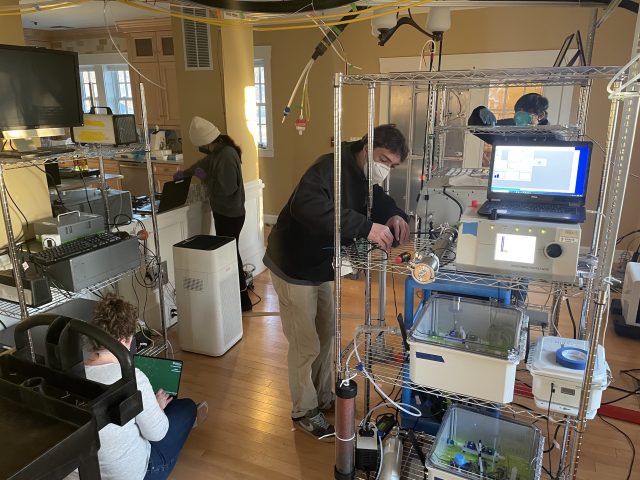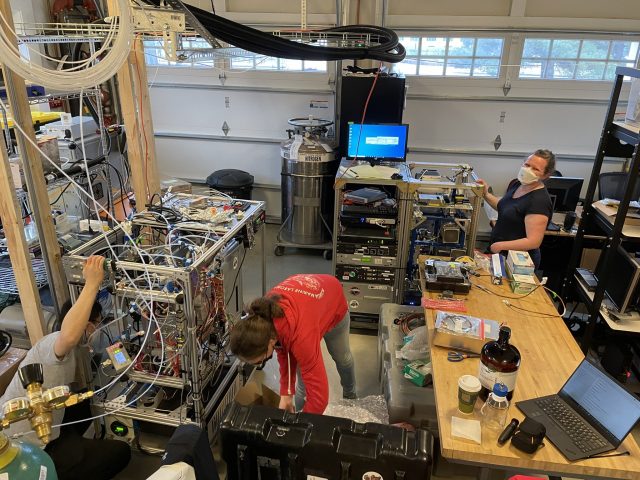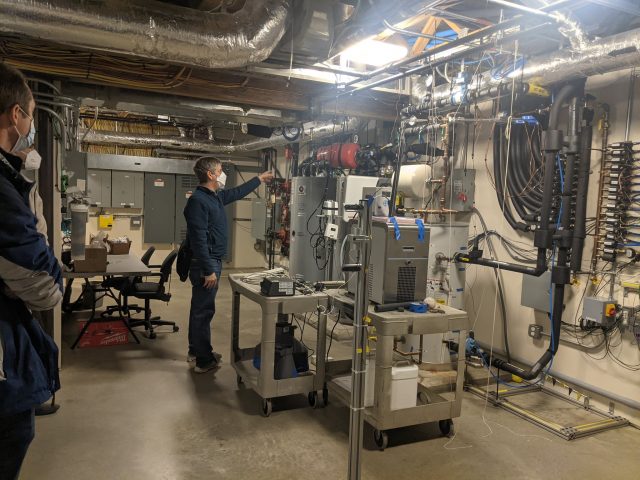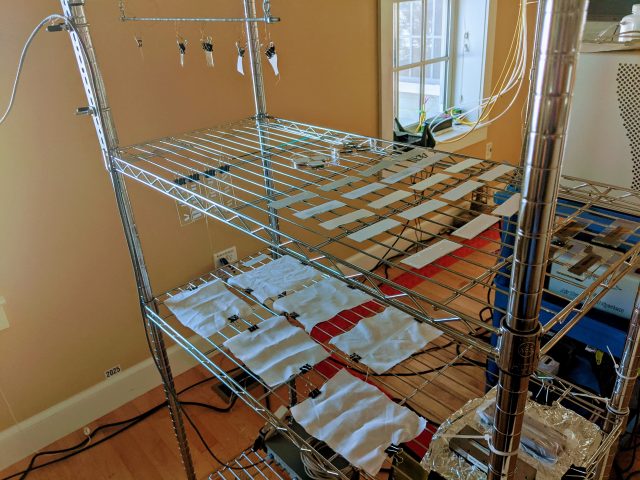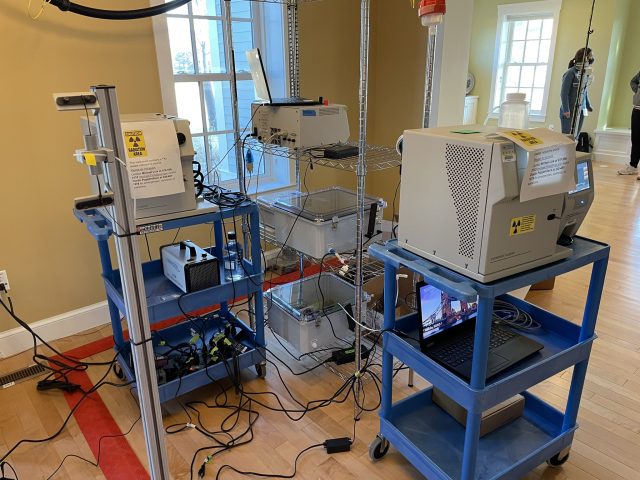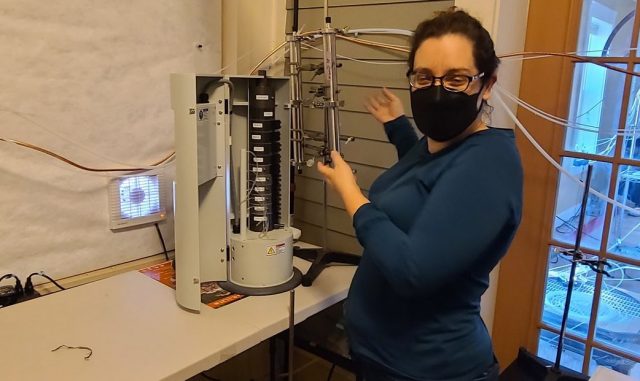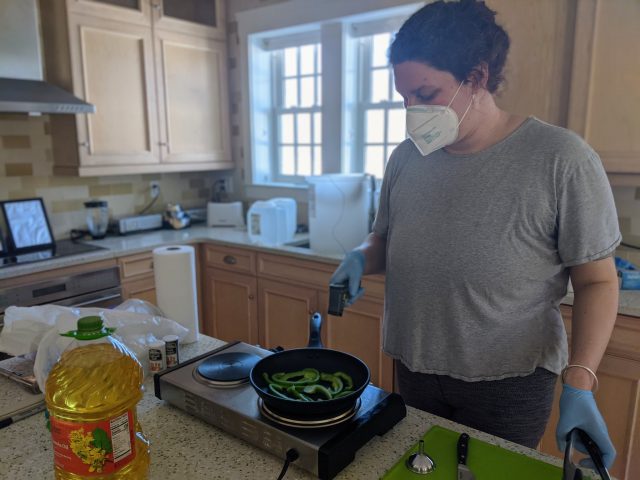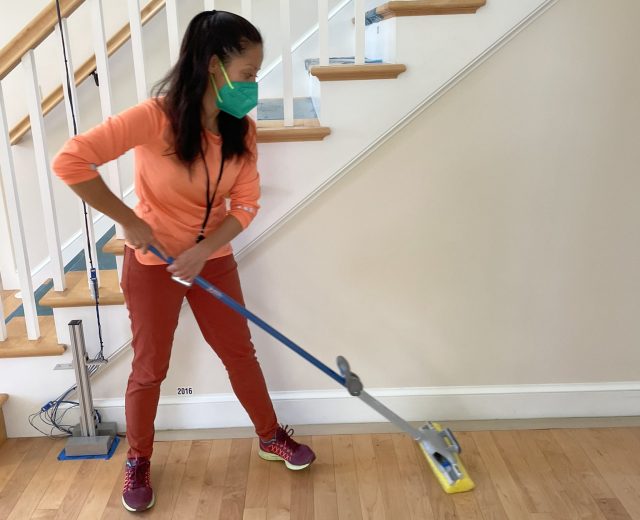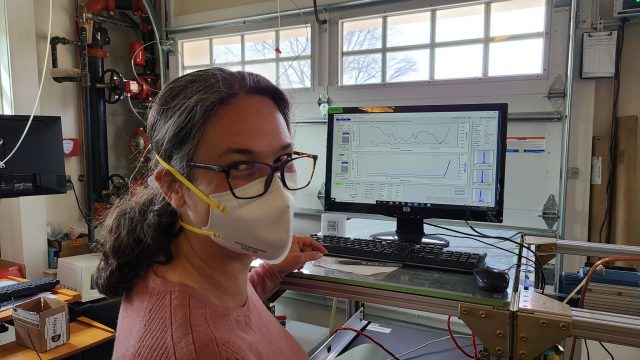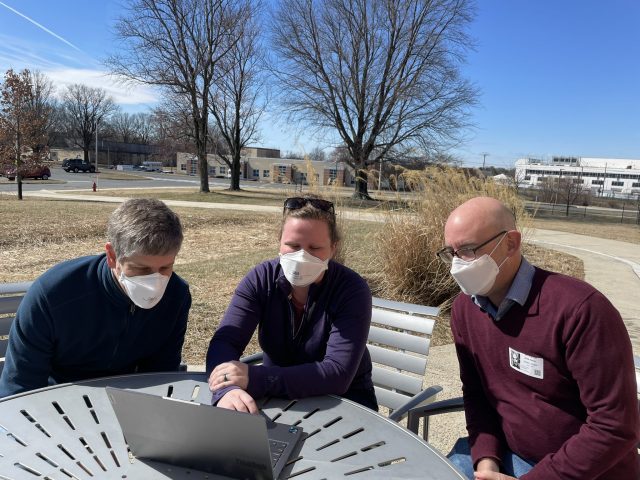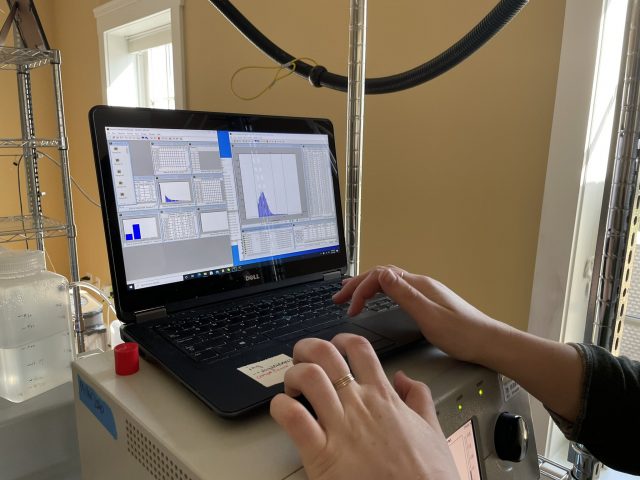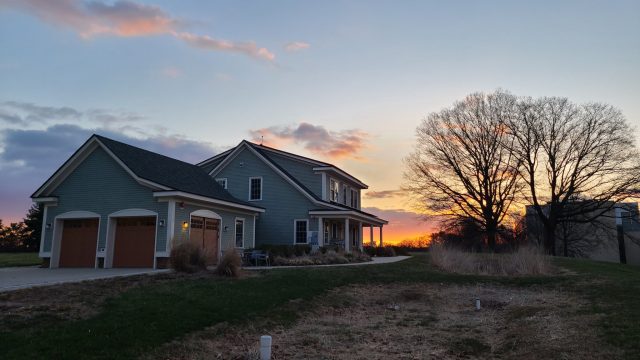
The Chemical Assessment of Surface and Air (CASA) experiment is a large, collaborative, indoor air chemistry field campaign taking place in February – April 2022 at the NIST Net Zero Energy Residential Test Facility in Gaithersburg, MD.
CASA centers around using chemical and environmental perturbations to investigate the chemistry of the indoor environment. Simply put, this experiment allows us to understand not only how outdoor air pollution influences indoor chemistry, but also what types of equilibria and chemical reactions control the air we breathe – and the surfaces we interact with in our homes and buildings.
Although we spend 90% of our lives indoors, the chemical processes constantly occurring in the air we breathe and the surfaces we touch remain poorly characterized. This project follows up on the discoveries of HOMEChem and is a collaborative, signature field project focused on chemical transformations occurring at the indoor surface-air interface using a ‘lab in the field’ approach through chemical and building perturbations to study chemical responses in the gas, particle, and surface phases.
Wildfire smoke and other outdoor air pollutants are introduced into homes through infiltration, while everyday indoor activities, consumer and building products add compounds directly into indoor air. The fate and subsequent chemistry of these gases and particles – and the resulting surface films – influence the air we breathe and the surfaces with which we interact. The CASA study centers around understanding chemical additions, or perturbations, in the indoor environment and using these perturbations to investigate pollutant fate, molecular transformations, and surface chemistry.
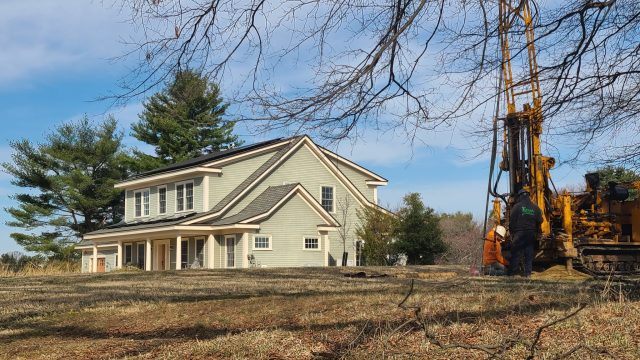
Laboratory experiments take a different approach to indoor chemistry, by probing specific chemical mechanisms. For example, the Indoor Chemical Human Emissions and Reactivity (ICHEAR) campaign and its suite of controlled chamber experiments highlighted human metabolic emissions and the role of occupants in individually influencing air composition. HOMEChem combined these approaches of realistic, uncontrolled field measurements with the scripted activities more typical of chamber studies by introducing controlled perturbations into a heavily instrumented test house. HOMEChem thus probed the chemical composition of indoor air under multiple, repeatable, perturbations representing realistic activities. The benefit of these large collaborative experiments to the field of indoor chemistry is obvious: these measurements allow the experimental and modeling CIE communities to work together to test our understanding of indoor chemical processes across multiple phases.
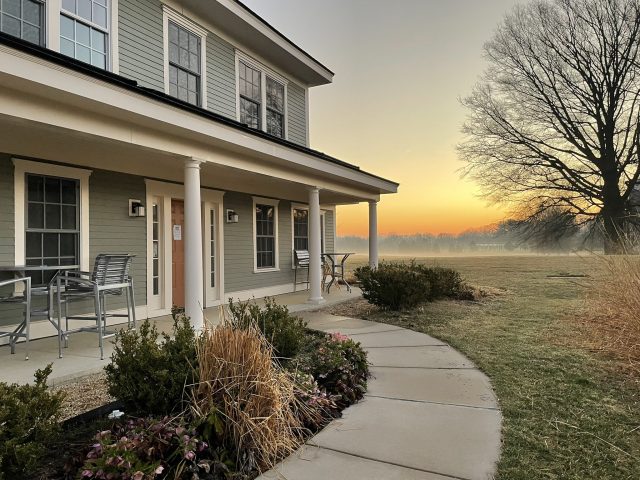
In order to follow the chemistry from these perturbations and answer a set of core science questions, we have recruited an array of researchers, including 14 research groups from 12 different universities and one research institutes to participate in the CASA field campaign. We thank the following researchers and their research groups for their participation in this field campaign:
- The NIST Indoor Air Quality and Ventilation Group (Dr. Dustin Poppendieck, Brian Dougherty, among other colleagues) at the NIST Net Zero Energy Residential Test Facility.
- Delphine Farmer (Colorado State University)
- Marina Vance (University of Colorado Boulder)
- Jon Abbatt and Arthur Chan (University of Toronto)
- Andrew Ault (University of Michigan)
- Douglas Collins (Bucknell University)
- Karen Dannemiller (Ohio State University)
- Allen Goldstein (University of California Berkeley)
- Vicki Grassian (University of California San Diego)
- Jesse Kroll (MIT)
- Rachel O’Brien (College of William & Mary, now at University of Michigan)
- Krystal Pollitt (Yale University)
- Barbara Turpin and Glenn Morrison (University of North Carolina)
You can follow along the experiment by checking out #CASAchem on Twitter.
CASA participant highlights
Amanda Gao, Graduate student, MIT

Advisor: Prof. Jesse Kroll
What type of measurement are you making at CASA? Low-cost measurements of volatile organic compounds (VOCs) and particles.
What are you excited to learn about at CASA? This is a first-time deployment for our low-cost sensor array, so I’m excited to see how it behaves in response to an evolving indoor environment!
Deborah Kim, PhD Student, University of California San Diego
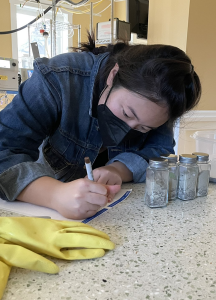
Advisor: Prof. Vicki H. Grassian
What type of measurement are you making at CASA? I am interested in the physical and chemical transformation of particles and thin films that are deposited onto surfaces such as window glass.
What are you excited to learn about at CASA? I am most excited to see the effects of particle deposition and thin film formation from smoke onto various surfaces, and how these particles change with factors such as ozone. This has been particularly relevant as a student living in California, where wildfire smoke is an event that occurs seasonally, so it is a great way to see our science being applied to solving issues that are going on right now!
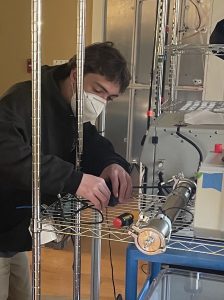
Drew Martin, MS Student, Environmental Engineering, University of Colorado Boulder
Advisor: Prof. Marina Vance
What type of measurement are you making at CASA? Particulate Matter concentrations (PM1, PM2.5, PM10) using over a dozen low-cost PM sensors and black/brown carbon concentrations using an aethalometer.
What are you excited to learn about at CASA? Spatial distribution and transport of particulate matter through the indoor environment and what circumstances impact the accuracy of low-cost PM sensors.
Jenna Ditto, Postdoctoral fellow, University of Toronto
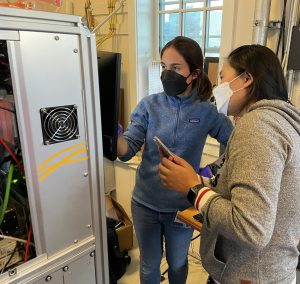
Advisor: Prof. Jon Abbatt
On Twitter: @jenna_ditto
What type of measurement are you making at CASA? We are measuring the real-time distribution of volatile organic compounds in the test house.
What are you excited to learn about at CASA? I’m excited about what we can learn about the dynamics of organic compounds in indoor air through the extensive suite of instrumentation and measurements at CASA. Across the diverse range of chemical species in the house, what type of indoor conditions drive these compounds into the gas phase, into the particle phase, or onto/off of surfaces? How does this impact our chemical exposure in our homes?
Jienan Li, Postdoctoral Researcher, Chemistry Department, Colorado State University
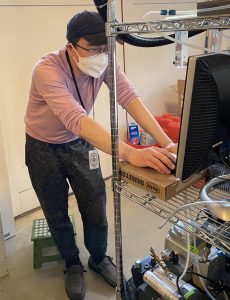
Advisor: Prof. Delphine Farmer
On Twitter: @Jienan Li
What type of measurement are you making at CASA? I am focused on measuring oxygenated volatile organic compounds (oVOCs) with iodide chemical ionization mass spectrometry (I-CIMS).
What are you excited to learn about at CASA? Ground-level ozone is an urban air pollutant and enters houses via window opening and house ventilation system. I’m quite interested in how the outdoor ozone impacts room air that people breathe inside. In CASA, we will add ozone into a test house to investigate indoor ozonolysis kinetics and the resulted gas & surface chemistry. Another topic that intrigues me is how well commercial air cleaners will improve the indoor air quality. Different types of air purifiers on market will be tested over typical background room air as well as challenging scenarios like cooking activities and wildfire smoke. These purifying systems include traditional or more advanced technologies such as high-efficiency particulate absorbing filter (HEPA), activated carbon filter, electrostatic air filter, ultraviolet (UV) light, and photocatalytic oxidation (PCO).
Liora Mael, PhD, Postdoctoral Scholar, University of Colorado Boulder
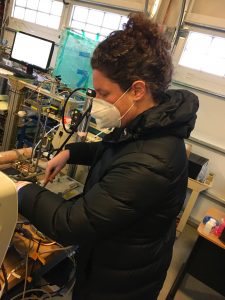
Advisor: Prof. Marina Vance
On Twitter: @LioraMael
What type of measurement are you making at CASA? Number and size distributions for wet and dry particles using two LDMA-SMPS, an APS, and a NanoDMA-SMPS.
What are you excited to learn about at CASA? I’m excited to see how particles created during smoke and cooking events interact with water, and how ozone injections following these events may (or may not) lead to new particle formation.
Michael Alves, PhD, Postdoctoral Research Fellow (NSF-ASCEND), University of California Berkeley
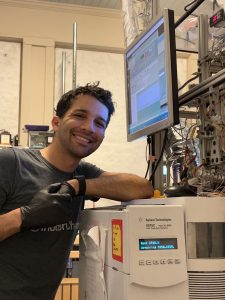
Advisor: Prof. Allen Goldstein
What type of measurement are you making at CASA? Measuring semi-volatile organic compounds (i.e., sugars, oils, etc.) in both the gas and particle phases – learning how different types of compounds partition to either the condensed or gas phase and what this means for the indoor chemical environment.
What are you excited to learn about at CASA? On the science side, I’m most interested in learning more about how surfaces are controlling a very significant portion of the indoor environment – I think it’s quite the departure from how atmospheric chemists usually thought of surfaces and there’s a lot of interesting data that suggests this chemistry is really unique. More personally, I’m very interested in how this type of science can propel evidence-based policy concerning environmental and public health. The Clean Air Act was enacted in the 1960’s, and since then, has contained no recommendations or policy concerning the health and safety of indoor pollution – even though the WHO attributes up to 50% of respiratory deaths worldwide due to indoor related pollutants. The recent expansion of funding for indoor chemistry related fields and newly-found interest from the National Science Foundation seems like a starting point for this conversation.
Michael F. Link, PhD, NRC Postdoctoral Researcher, National Institute for Standards and Technology
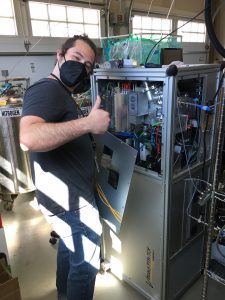
Advisor: Dr. Dustin Poppendieck
What type of measurement are you making at CASA? For the CASA project I’m measuring ozone, nitrogen oxides, and a suite of volatile organic compounds (VOC).
What are you excited to learn about at CASA? High ventilation rates indoors can drive surface-bound VOCs into the gas phase and low ventilation rates can promote the absorption of gas phase VOCs to surfaces. I’m interested in how different types of VOCs participate in surface adsorption under conditions of low and high ventilation in the Net Zero Energy Test House, and how we can use these observations to understand the export of indoor VOCs to the outdoor environment. Additionally, I’m interested in how outdoor nitrogen oxide pollution that is transported indoors affects the VOC oxidation chemistry initiated by reactions with ozone.
Additional Photos from CASA

